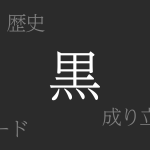Japanese tradition and culture exhibit a unique aesthetic in their use of colors, among which ‘Shiro (白 – しろ)’ stands out. Known for its refined simplicity and deep symbolism, white permeates every corner of Japanese life. This article delves into the significance and history of white, as well as its color codes, exploring the allure of Japan’s ‘Shiro’.
About Shiro (白 – しろ)
White results from the equal reflection of all spectra of light. In Japanese culture, it symbolizes purity, cleanliness, and sanctity, often used in significant life moments such as wedding attire and mourning clothes for funerals. It also represents new beginnings and potential, making it a popular choice in various designs and art forms.
The History of Shiro
The history of white in Japan is ancient, treated as a special color since the age of mythology. During the Heian period, nobles wore white garments to express purity and authority. Traditional performing arts like Noh and Kabuki use white makeup to highlight the spiritual nature of characters. Over time, white has grown to embody core Japanese values and aesthetics.
Color Codes for Shiro
In digital design and printing, accurate representation of white requires specific color codes. Below are examples of color codes for white:
- HEX: #FFFFFF
- RGB: R:255 G:255 B:255
- CMYK: C:0 M:0 Y:0 K:0
Western Name for Shiro
In the West, white is called ‘White,’ associated with purity, innocence, and peace. In fashion and interior design, white reflects trends in minimalism and modernism, exuding a universal appeal.
Summary of Shiro
Japan’s ‘Shiro’ transcends mere color to hold deep cultural significance, recognized across traditional ceremonies and modern design. Representing refined simplicity and symbolizing various emotions and states, white will continue to be an indispensable element in Japanese cultural life.

























